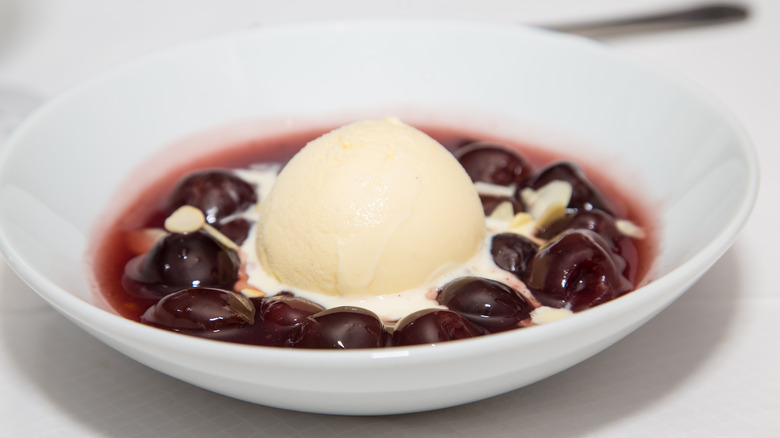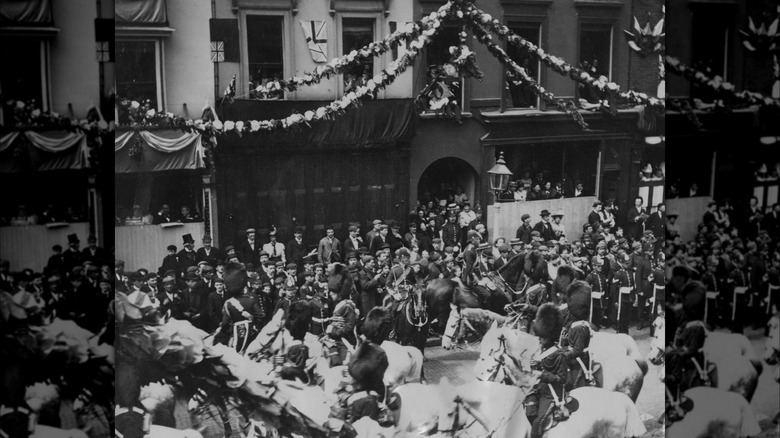The Royal Connection To Auguste Escoffier's Timeless Cherries Jubilee
Have you ever heard about the time when "the king of chefs and the chef of kings" created a dessert for the Queen? The year was 1897, and Queen Victoria had recently entered her 60th year on the throne, making her the longest-reigning monarch in English history. It was a big deal, to say the least, and the celebration was given a name to match: the Diamond Jubilee. "Cherries jubilee" was a fitting dessert for such a special occasion: With its glossy syrup and theatrical flambé, it has a very regal air.
Legendary chef Auguste Escoffier invented the treat as an ode to Queen Victoria. So well-known was her love of cherries, goes the story, that Escoffier was inspired to craft the dessert in her honor for the Diamond Jubilee. The French chef has been revered as a culinary artist and pioneer of classic French culinary style, even creating the iconic "five mother sauces" of French cooking. It's an appropriate heritage for the royally-inspired (and royally delicious) classic dessert.
Cherries jubilee was far from Escoffier's only brush with royalty. In 1864, the chef cooked for various royals from around the world at Le Petit Moulin Rouge as Commis Rotisseur. In fact, similar to the structure of a monarchy, Escoffier was the first chef to establish the hierarchical "brigade system" in staffing his professional kitchens. Still, Escoffier is the first celebrated chef in history to work for a public audience rather than as a private cook exclusively for wealthy and important figures.
The evolution of this cherry-centric homage
The original cherries jubilee didn't include ice cream; that now-trademark aspect of the dish wasn't added until much later. (It'd also be great over a slice of pound cake or cheesecake.) Indeed, "evolution" has been a prominent theme in the history of this festive dessert. As Escoffier himself said, "Cooking, like fashion, must evolve with time," per the Auguste Escoffier School of Culinary Arts. Pitted sour cherries are traditionally used to make cherries jubilee, but other modern recipes use sweeter Bing cherries and swap brandy for rum or bourbon. For even easier prep, thawed frozen cherries also work.
Around the time foodies were first enjoying it, cherries jubilee was largely exclusive to fancy restaurants, where it was a very popular dessert. But the dish fell into the realm of kitsch sometime around the 1950s or 1960s when home cooks began making cherries jubilee with canned cherries to dazzle dinner party guests. In a way, this fall from grace was also a huge stride towards eliminating the haughty attitude associated with fine dining, as the sophisticated dessert became more accessible. This trademark Escoffier dish is still very impressive, but it can be made from start to finish in a single saucepan.
Still, the treat literally fit for a queen has never completely gone out of style. In another testament to Escoffier's enduring influence, Starbucks even sold a Cherries Jubilee Mocha for a while.

